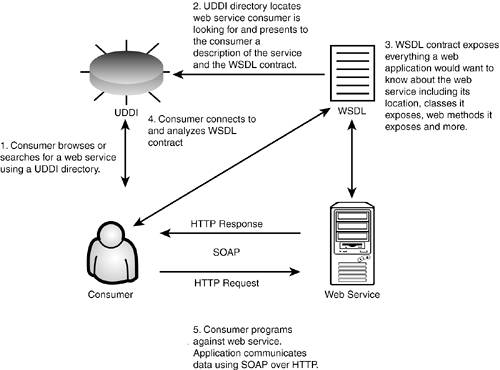An Introduction to Web Services
| Web services are new types of web applications. They are self-contained, modular programs that can be published, found, and called over the web. They perform functions that can range from something as simple as validating a credit card to updating hotel reservations. After a web service is deployed, users, applications, and other web services can invoke functions (called web methods) that you build within the web service. Still seem like it's too good to be true? Think again. Web services are currently being used in Microsoft's My Services and Passport initiatives. The Passport authentication service is a self-contained web service that exposes an authentication scheme allowing other developers and applications to validate a user's credentials from one location. What this means is that if every developer used the Passport authentication service, it would eliminate the need for ever having to program your own login page. So what makes up a web service? The basic framework of a web service lies within its platform. Platform, you ask? Web services, unlike their predecessors (RPC, CORBA, and DCOM), rely on open standards. These standards are outlined next:
As you can see, the foundation for web services lies in open standards such as XML, SOAP, HTTP, WSDL, and UDDI. But how do these components make up the web services architecture? Figure 30.1 sheds some more light on the subject. Figure 30.1. XML, SOAP, HTTP, WSDL, and UDDI are all key components in the web services architecture. The building blocks of web services are squarely rooted in open source standards such as XML, SOAP, HTTP, WSDL, and UDDI. But how does one use these standards to create one's own web services? For the most part, the development of web services is up to you. More specifically, web services are created by your language of choice in VB.NET, C#, ColdFusion, and more. How you expose, consume, and discover the web service once it's created is ultimately up to the standards mentioned in Figure 30.1. |
EAN: 2147483647
Pages: 237